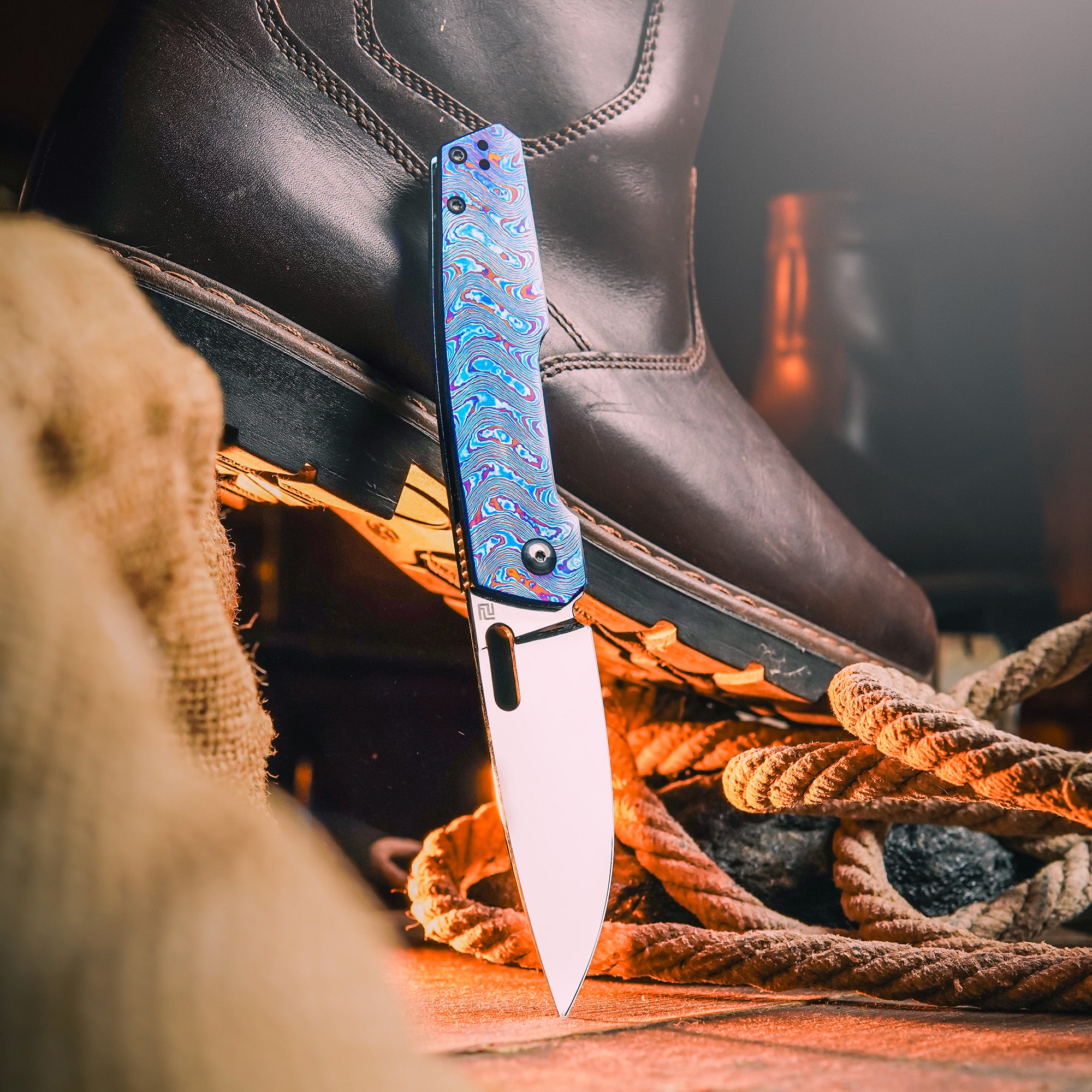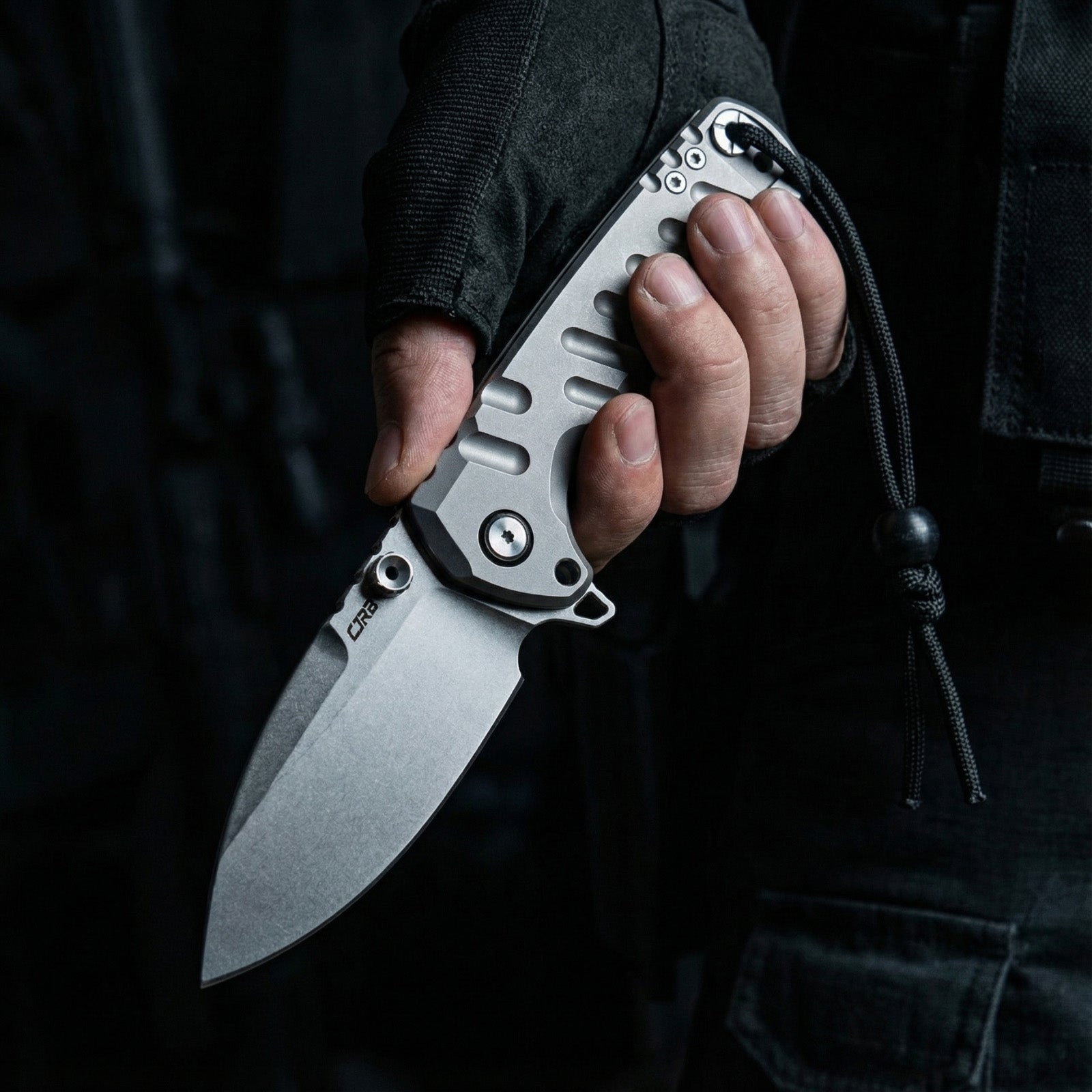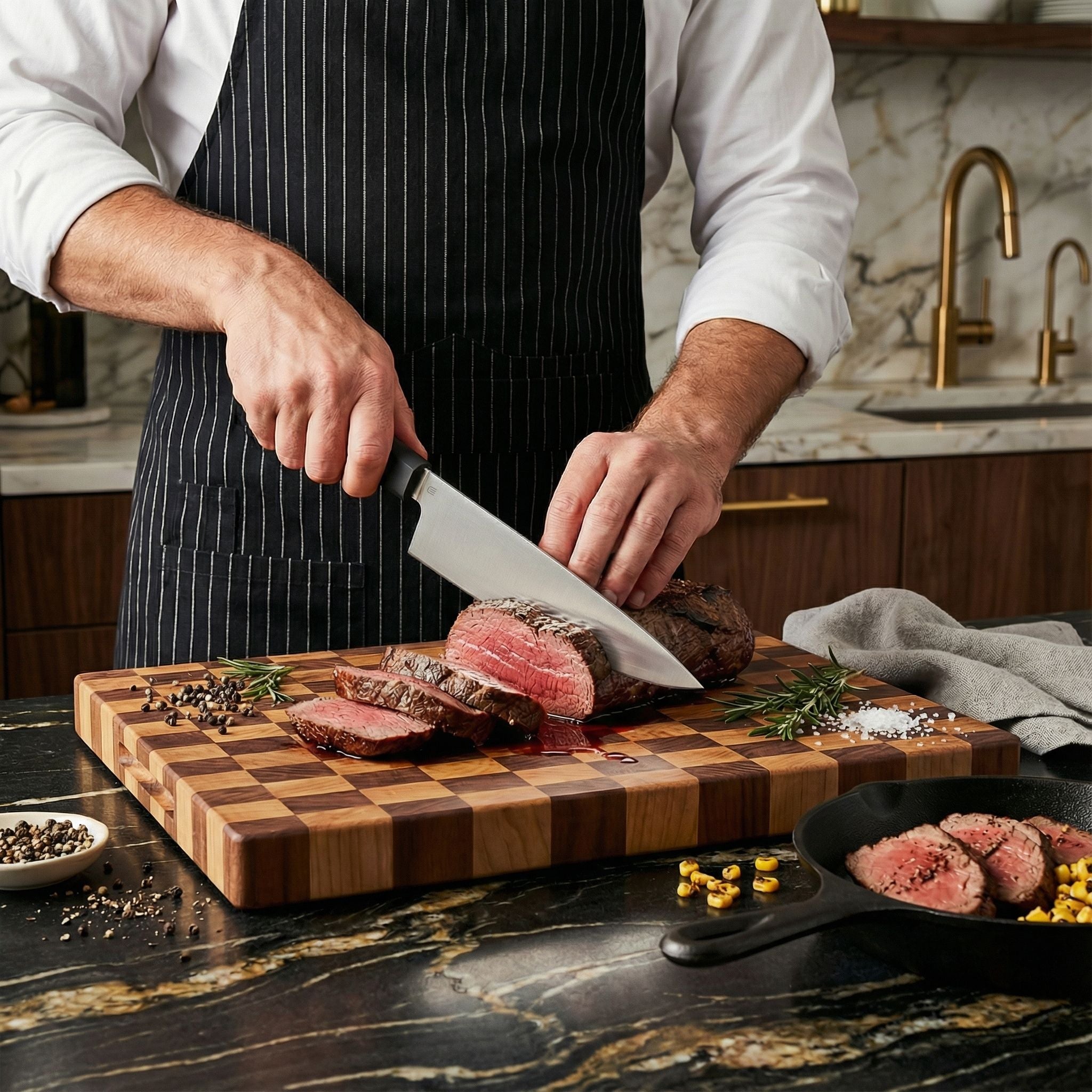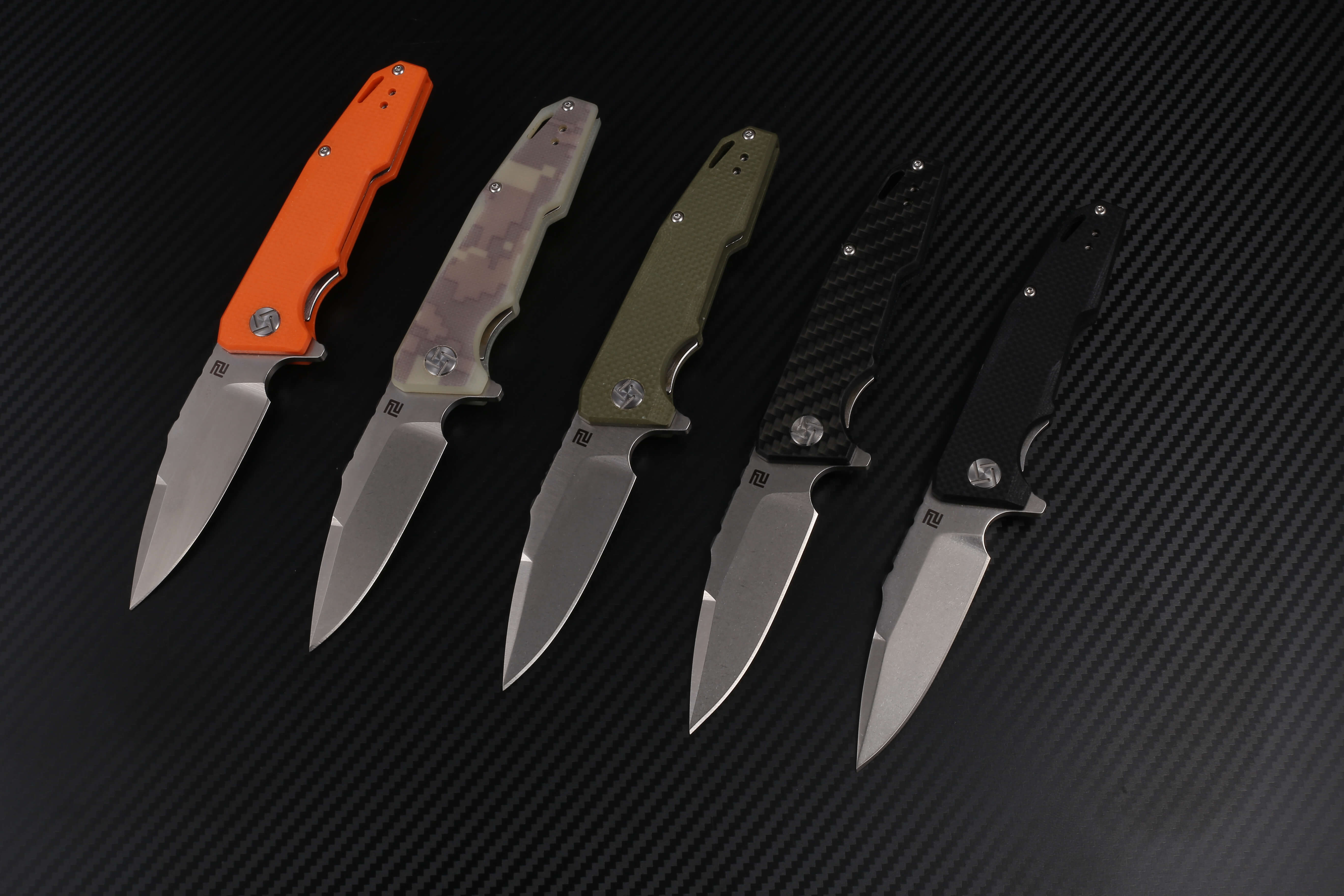Introduction
Having a sharp knife makes cooking and other tasks much easier and safer. A sharp blade glides through foods effortlessly and requires less pressure to cut, making it less likely to slip and cause injury. Keeping your folding knives razor sharp requires learning proper sharpening techniques and how to maintain the edge.
In this guide, we'll cover the basics of knife sharpening, methods for sharpening folding knives, and tips for extending the life of your blades.

Why Sharp Knives Matter
There are several benefits to using sharp knives:
- Safety: A sharp knife is safer than a dull one. It requires less pressure and is less likely to slip, minimizing the chance of cutting yourself.
- Precision: A razor-sharp edge allows for more precise, accurate cuts. This is important for tasks that require close control like slicing, dicing, and carving.
- Efficiency: A sharp knife glides through foods with little effort, making cutting faster and easier. This minimizes strain on your hands and wrists.
The Basics of Knife Sharpening
Before you start sharpening your folding knife, it's important to understand the factors that determine a blade's sharpness. These include:
- Angle: The angle at which you sharpen the knife's edge significantly impacts how sharp and durable it becomes. Most folding knives have an edge angle between 15 to 20 degrees per side. 15 degrees per side will yield a razor-sharp edge, while 20 degrees provides more durability. Finding the right balance for your needs is key.
- Hardness: The hardness of the blade's material determines how well it holds an edge. Softer steels like stainless steel are easier to sharpen but lose their edge quickly. Harder steels like VG-10 take more effort to sharpen but retain their sharpness for longer.
- Grinding medium: Whetsone, sharpening rods, and electric sharpeners all use different abrasive materials to grind away steel and form an edge. Finer grits yield a sharper edge, while coarser ones are better for repairing damage. Using a combination of media can produce the sharpest, most durable edge.
Sharpening Methods
There are several ways to sharpen a folding knife. The method you choose depends on your skill level, needs, and budget. Let's look at some of the options:
Whetstones: The Classic Technique
Whetstones are abrasive stones used to grind a new edge. They require patience but produce exceptional results. Here are some tips for using whetstones:
- Select a medium to fine grit (800 to 4000) stone for folding knives. Start with a lower grit to reprofile very dull blades.
- Lubricate the stone with honing oil or water and place it on a damp towel.
- Maintain a consistent angle as you slide the blade along the stone using even pressure.
- Use a honing guide if you're having trouble holding the proper angle.
- Repeat on progressively finer grits until you achieve your desired sharpness.
- Finish with a strop to polish the edge.
Sharpening Rods: The Professional's Choice
Sharpening rods, like ceramic honing rods, are excellent for quick touch-ups and maintaining sharpness between whetstone sessions. Here's how to use them:
- Choose a ceramic rod with a medium to fine grit. Softer rods may damage harder steels.
- Hold the rod at a 15 to 20-degree angle and slide the blade along the rod using light, even pressure. Do 5 to 10 passes on each side.
- Repeat regularly as needed to keep the edge sharp. Sharpening rods do not replace whetstones, they simply enhance and prolong the edge.
Electric Sharpeners: The Convenient Solution
Electric sharpeners quickly and easily sharpen knives with minimal effort but can shorten blade life if used improperly. Here are some tips for choosing an electric sharpener:
- Look for a model with multiple stages from coarse to fine. 2 or 3-stage sharpeners work well for most folding knives.
- Choose all-metal construction and pre-set angles to suit your knife. Look for 15 or 20 degrees.
- Double bevel models sharpen both sides of the blade and tend to work best for knives that cut in push and pull strokes like kitchen knives.
- Practice making smooth passes through the sharpener. Apply very light pressure, especially on the fine stages.
- Only use the electric sharpener for quick touch-ups. Use whetstones for primary sharpening to maximize blade life.
Stropping: The Secret to Razor Sharpness
Stropping is a finishing technique that uses a abrasive leather strop to polish and refine the blade edge. It can produce a razor-sharp edge after sharpening with whetstones or an electric sharpener. Here's how to strop a knife:
- Affix the abrasive strop securely to a countertop or cutting board.
- Hold the knife at about a 15-degree angle to the strop.
- Press the edge to the strop and slide the blade smoothly along using minimal pressure.
- Perform 10 to 15 passes on each side until you feel a slightly "tacky" edge.
- Repeat with a few passes on the clean leather side of the strop.
- Test the edge—it should glide effortlessly through paper. Repeat if needed.
- For best results, strop your folding knife regularly after each use to maintain maximum sharpness between sharpening.
Common Mistakes You Should Know
You've already get the sharpen tricks, but you have to avoid mistakes. Here are some common mistakes to avoid when sharpening a folding knife:
- Using an incorrect angle. The most common mistake is sharpening a folding knife at the wrong angle. For most folding knives, you want to use an angle between 15 to 20 degrees per side. Too steep an angle will yield a dull edge, while too shallow an angle will produce an edge that dulls quickly.
- Applying too much pressure. Using excessive pressure when sharpening can damage the edge of the blade. Apply light, even pressure and let the abrasive do the work.
- Sharpening on coarse stones only. Only using a coarse whetstone or sharpener setting will not produce a sharp edge. You need to progress through multiple grits, from coarse to fine, to achieve maximum sharpness. Finish with an ultra-fine grit and strop for a razor edge.
- Sharpening too frequently. While it's important to sharpen your folding knife regularly to keep it safe and effective, sharpening too often will reduce the blade thickness and durability over time. Only sharpen when the knife becomes dull from use. For most folding knives, this may be around every 3 to 4 uses.
- Not maintaining the edge. Sharpening a folding knife is only part of keeping the edge sharp and durable. You also need to perform regular maintenance like honing, stropping, and oiling the blade. Honing rods and strops are very effective for quickly touching up the edge between sharpening.
- Not cleaning and oiling the pivot. A folding knife's pivot joint also needs maintenance to prevent wear and tear over time. Regularly disassemble, clean and oil your folding knife's pivot according to the manufacturer's instructions. This will keep the action smooth and prevent rust.
- Dishwashing. Never put your folding knives in the dishwasher. The harsh chemicals and high heat can damage the blade and handle materials. Always hand wash and dry your folding knives promptly after use.
- Unsuitable cutting tasks. Folding knives are designed for basic cutting tasks. Avoid cutting through hard materials like bone, wood or frozen foods which can easily dull or damage the edge. Choose a tool better suited for these cutting jobs.
Taking Care of Your Knives
Here are some tips to keep your folding knives sharp and extend their lifespan:
- Avoid cutting through bones or other hard objects that can dull or chip the edge.
- Do not use your knives to open packaging, strike a match or cut other unsuitable materials.
- Never put knives in the dishwasher. Hand wash and dry them promptly after use to prevent rusting.
- Apply a protective oil like jojoba or coconut oil to blade and pivot area regularly. Wipe away excess.
- Store knives in a knife block, sheath or drawer liner. Make sure edges remain protected.
- Sharpen folding knives when dull but avoid over-sharpening which reduces blade thickness.
- Touch up the edge with a honing rod after each use but whetstone sharpen only when needed, at most after every 3-4 uses.
- Disassemble and clean/oil folding knife pivots periodically according to the manufacturer's recommendations.
You can see more tips in Artisancutlery previous blog post and 16 Tips for Maintaining Your Fixed Blade Knife on folding knife care and maintenance.
Conclusion
Using the proper sharpening techniques keeps your folding knives razor sharp and safe to use. Understanding the basics of knife sharpening, including angles, materials, and abrasives allows you to choose the right methods and tools for your needs and blades.
With regular sharpening and maintenance, your folding knives will provide years of faithful service. Apply these best practices and your folding knives will always be a cut above.










Leave a comment
All comments are moderated before being published.
This site is protected by hCaptcha and the hCaptcha Privacy Policy and Terms of Service apply.